
| Publisher: | Tin House | |
| Genre: | Short Stories (single author), Dystopian, Magical Realism, Fantasy, Contemporary, Literary, Fiction | |
| ISBN: | 9781951142995 | |
| Pub Date: | February 2022 | |
| Price: | $16.95 |
| Starred | Fiction |
by Kim Fu
Kim Fu (The Lost Girls of Camp Forevermore) sheds an uncanny light on the emotional dissonance of modern life in Lesser Known Monsters of the 21st Century, her strange and fantastic first collection of short stories.
In "Pre-Simulation Consultation XF007867," the operator of a service that renders lifelike simulations based on a customer's input warns a prospective client that indulging in certain fantasies could lead to dangerous consequences. This concise opening story serves handily as a thematic overture for what follows: the unsettled (and often unsettling) boundary between reality and fantasy is a perpetual fascination of Fu across these 12 stories, as are the dark and strange expressions that desire finds through technology and art. Fu embraces the sorts of high-concept premises native to the weird fringes of science fiction and horror, deftly magnifying the strangeness of everyday anxieties.
"Twenty Hours" features a high-end consumer device that protects the wealthy from certain types of death; when a striving middle-class couple discovers that this allows them to murder each other without consequence, it casts their marital malaise into high relief. Meanwhile, "Sandman" showcases the author's knack for sketching a genuinely unnerving image. Riffing on a familiar folk tale, Fu presents the titular creature as a hooded, wraithlike figure, the stuff of nightmares. Yet to the story's insomniac protagonist, he brings a perverse sense of comfort with "his occasional, ecstatic visits between long seasons of wakefulness." By examining complex emotional dynamics like these through the prism of speculative fiction, Fu's stories expose the cracks in our sense of reality. --Theo Henderson, bookseller at Ravenna Third Place Books in Seattle, Wash.
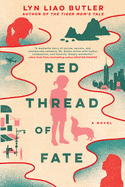
| Publisher: | Berkley | |
| Genre: | Women, Family Life, General, Romance, Multicultural & Interracial, Fiction | |
| ISBN: | 9780593198742 | |
| Pub Date: | February 2022 | |
| Price: | $17 |
| Fiction |
by Lyn Liao Butler
Lyn Liao Butler (The Tiger Mom's Tale) offers secrets, tragedy, hope and redemption in a novel centered on family and forgiveness. When Red Thread of Fate opens, Tam is on the phone with Tony, her husband. They are a bit short with each other; the marriage has been a little off, but they're generally headed back on track and preparing to adopt a little boy from China, which both look forward to. Then there is cursing, a roaring sound--and just like that, Tam is a widow. The shocks come quickly, one after another: Tony was not in Manhattan, where he should have been, but in Flushing, Queens, and accompanied by a cousin Tam thought he'd been estranged from for years, killed by the same truck that struck Tony. Then Tam is surprised to be named guardian of the estranged cousin's five-year-old daughter, even as her son-to-be still awaits adoption in China.
By nature a shy and private woman, Tam is prompted by her new life--widowed, a single parent, grieving--to accept help, against her instincts. Slowly, she builds a family and a community: taking in her niece, moving toward adoption (which must be renegotiated now that she does not have a husband), deepening friendships and finding new ones. Red Thread of Fate is a novel about what ties people to one another, and the nature of those bonds, the unintended consequences of choices and the possibility of a fresh start. With contemplative characters, surprising humor and a twisting plot, Butler's thought-provoking story of nontraditional family models will appeal to readers interested in fate and identity. --Julia Kastner, librarian and blogger at pagesofjulia
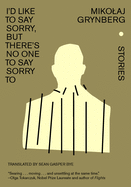
| Publisher: | The New Press | |
| Genre: | Short Stories (single author), Literary, Fiction, Jewish | |
| ISBN: | 9781620976838 | |
| Pub Date: | February 2022 | |
| Price: | $19.99 |
| Fiction |
by Mikołaj Grynberg, trans. by Sean Gasper Bye
Photographer/psychologist/author Mikołaj Grynberg is known in his native Poland for his documentary nonfiction featuring his generation of Polish Jews, born after the Holocaust and raised by survivors. Grynberg turns to fiction for the first time with I'd Like to Say Sorry, but There's No One to Say Sorry To, a sparse but dense collection of 31 precisely distilled short stories in which he "seeks to tell these personal stories in literary form." The result--wrenching, astonishing, surprisingly humorous--is a stupendous success: gorgeously crafted, deeply affecting narratives, empathically translated by Sean Gasper Bye, who also appends an illuminatingly personal endnote.
Most of Gynberg's stories are presented interview-style, their narrators sharing memories, experiences and often secrets. Revealing Jewish identities is one of Grynberg's most penetrating themes: "It wasn't a message she passed on to us, it was fear," a granddaughter says in reaction to her late Grandma's deathbed revelations of "ghettos... Auschwitzes... gas" in the opening "Unnecessary Trouble." In "An Elegant Purse," a mother fuels a contentious relationship with her daughter for decades in order to protect her child from her Jewish history. An estranged father confesses to multiple generations of suicide in twisted attempts to expunge the family's Jewish roots in "Bitter Chocolate." A boy with a limp learns of his Jewish parentage after his mother's death in "An Empty Jewish Soul."
In this collection--originally called Rejwach, which translates as hullabaloo, uproar--Grynberg efficiently renders desperate choices, unspeakable endurance and unexpected laughter into compact literary mementos. His work stands stalwart as a "testimony of a Jewish present--a Jewish presence." --Terry Hong, Smithsonian BookDragon
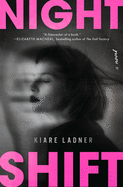
| Publisher: | Mariner Books | |
| Genre: | Psychological, City Life, Literary, Coming of Age, Fiction | |
| ISBN: | 9780063138247 | |
| Pub Date: | February 2022 | |
| Price: | $27.99 |
| Fiction |
by Kiare Ladner
Walking the fine line between fascination and obsession can be thrilling and electrifying, even if also terrifying and destructive. In Nightshift, Kiare Ladner's absorbing and surprising debut novel, Meggie Groenewald goes on a booze- and drug-fueled journey of sexual exploration when she becomes entranced by her seductive and enigmatic coworker Sabine Dubreil. Meggie and Sabine, both 23 years old, cover the night shift at a media monitoring company and work with an assorted collection of burnouts and eccentrics, who prowl seedy bars and clubs in the early morning hours. As Meggie struggles to adapt to a nocturnal schedule, she begins drinking too much and sleeping too little. Her infatuation with Sabine grows, though she can't decide whether what she feels is physical longing or a more complex desire to actually become Sabine.
Soon Meggie's life revolves around the push-and-pull dynamic that defines her "fairytale friendship" with her uninhibited coworker, prompting her to break up with her mild-mannered boyfriend, drop out of university and distance herself from her friends. Set in London in the late 1990s, the hectic urban scenery feels viscerally gritty and disorienting, dragging readers along down the rabbit hole of Meggie's decline. Her exploits also reveal hints about her true nature. Before their breakup, Meggie's boyfriend tells her he feels sorry for Sabine, adding, "It's terrible to be used like that." Within the tangled mess of Meggie's traumatic past and unhealthy fixation with Sabine, it becomes unclear who is the truly toxic one in the pair--and who is careening toward a more tragic outcome. --Angela Lutz, freelance reviewer
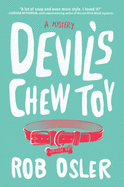
| Publisher: | Crooked Lane Books | |
| Genre: | Humorous, Mystery & Detective, Amateur Sleuth, Crime, General, Suspense, Thrillers, Fiction, LGBTQ+ | |
| ISBN: | 9781643859439 | |
| Pub Date: | February 2022 | |
| Price: | $26.99 |
| Mystery & Thriller |
by Rob Osler
The Devil's Chew Toy, Rob Osler's debut novel, is an inviting and gay cozy mystery, written with a clipped pace and a strong and assured voice. This droll and beguiling story reads like a sparkling combination of Alfred Hitchcock's North by Northwest and Armistead Maupin's Tales of the City. Diminutive eighth-grade social studies teacher and part-time blogger Hayden McCall--"Being five foot four (rounding up) and weighing 125 (again, rounding up)"--has been criticized by his former boyfriend, who said his "tolerance for thrill-seeking maxed out on the teacup ride at Disneyland." But that was before Venezuelan go-go boy Camilo Rodriguez accidentally kicked him in the face during a pole dance and took him home for an erotically charged, but chaste, night of conversation and cuddling. In the morning, Hayden wakes up to find only Camilo's bull terrier, Commander, in the apartment. He learns through two police officers that Camilo's truck was found in an empty parking lot, doors open and engine running.
Realizing that finding a missing gay go-go boy is a low priority for the police, Hayden sets off to find the mislaid man. He partners with Camilo's friend Hollister, a lesbian furniture maker (Hayden describes her as Serena Williams with a mohawk); Mysti, Hollister's prickly Korean American girlfriend; and Burley ("a six-and-a-half-foot-tall, three-hundred-pound giant of a woman") to form a ragtag team of amateur sleuths.
Osler has a knack for pacing this rollicking mystery at a fun gallop, but he truly excels at creating quirky and original characters. Cozy fans will be clamoring for sequels. --Kevin Howell, independent reviewer and marketing consultant
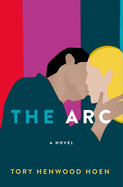
| Publisher: | St. Martin's Press | |
| Genre: | Women, Romantic Comedy, Romance, Fiction | |
| ISBN: | 9781250276773 | |
| Pub Date: | February 2022 | |
| Price: | $27.99 |
| Romance |
by Tory Henwood Hoen
In a world rife with shiny new dating apps, how far is too far to go to find the one without having to suffer through dozens, if not hundreds, of bad dates? That's the question Tony Henwood Hoen poses in her debut novel, The Arc, in which the eponymous Arc promises clients just one perfect romantic match--in exchange for a week of time spent plumbing their physical and emotional depths and a $50,000 fee.
Ursula Byrne is crushing it at her job as v-p of strategic audacity at a branding agency in Manhattan that fills her bank account but not her soul. Woefully single, she's tired of her dating options and about ready to embrace life as a single lady with a cat when she is introduced to the Arc, whose website reads: "Lasting love is in the details. It's time to be more particular." Somewhere between skeptical and optimistic, Ursula signs up. When she's matched with Rafael Banks a few weeks later, it feels too good to be true.
Their magical first date doesn't happen until more than 100 pages into The Arc, during which readers have learned much about Ursula and nothing about Rafael. While this pacing feels uneven at first, it starts to feel more deliberate as the new couple's relationship takes off. The Arc is a romance novel, but even more so a story of self-discovery and womanhood, of Ursula coming into her own both as an individual and as one half of a perfectly happy couple. --Kerry McHugh, freelance writer
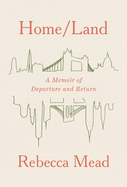
| Publisher: | Knopf | |
| Genre: | Biography & Autobiography, Emigration & Immigration, Personal Memoirs, Political Ideologies, General, Social Science, Political Science | |
| ISBN: | 9780525658719 | |
| Pub Date: | February 2022 | |
| Price: | $27 |
| Biography & Memoir |
by Rebecca Mead
Increasingly worried by hardline conservative politics in the U.S., New Yorker staff writer Rebecca Mead (My Life in Middlemarch) and her American husband decided to pull up stakes and move back to London with their teenage son. In Home/Land, her third book, Mead writes thoughtfully about her travels back and forth across the Atlantic, and her choice to uproot herself and her family. "We choose to rock our own foundations," she writes. "We chose movement, because movement is a kind of freedom, too."
Mead delves into her youth on England's south coast, her family's working-class London roots, the two decades she spent in New York and the life she eventually built there. Along the way, she shares details about her family's history and the homes they occupied, detailing her own attempts to make a home first in Brooklyn and then in London.
An expert at living between two worlds, a professional observer, Mead wonders how this move will affect her son. She wants him to know "what it is to yearn for elsewhere," even while admitting her own ambivalence about both of her countries and her decision to return to England. She wants to give her son a sense of spaciousness, the freedom to move between two worlds, but also "this questionable gift: a lost place to long for." Meditative and moving, Mead's account will inspire readers to muse on their own lost places, and to think about what truly makes a home. --Katie Noah Gibson, blogger at Cakes, Tea and Dreams
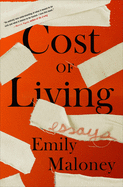
| Publisher: | Holt | |
| Genre: | Biography & Autobiography, Medical (Incl. Patients), Industries, Health & Fitness, Business & Economics, Healthcare, Mental Health | |
| ISBN: | 9781250213297 | |
| Pub Date: | February 2022 | |
| Price: | $27.99 |
| Essays & Criticism |
by Emily Maloney
Emily Maloney has been both a hospital patient and an emergency medical technician. In the 16 probing essays of Cost of Living, she draws on both experiences to delve into mental illness, chronic pain and addiction--and their treatment. Though she has autoimmune disorders as well as depression, Maloney passes as a well person, and her familiarity with medical settings makes her an informed observer. "Some Therapy" lists 12 psychiatrists she saw during her childhood and teenage years for developmental differences or anxiety. At 19 she attempted suicide by overdose (she marks a second annual "birthday" to celebrate still being alive); it took years to pay off the care she received.
As an emergency room technician at Midwest hospitals, she later saw how medical procedures and supplies add up to astronomical patient debt. "This, somehow, totaled the cost of living," she writes. For some, that price is just too high. The book subtly questions such financial inequality: the author briefly earned six figures at a pharmaceutical company, working there just long enough to repay her student loans.
In other essays, Maloney notes an epidemic of pain pill addiction among patients and colleagues ("For Pain"), worries a nonfunctioning EKG machine might have produced false results ("Heartbroke") and muses on hospital mortality ("Three Deaths"). Most pieces are centered on medical themes, but "Clipped," about her parents' poverty and her high school job grooming dogs at PetSmart, is a stand-out. Perfect for readers of Anne Boyer and Emilie Pine, this essay collection features thought-provoking musings on the value of life. --Rebecca Foster, freelance reviewer, proofreader and blogger at Bookish Beck

| Publisher: | Ecco | |
| Genre: | Family & Relationships, Love & Romance, Biography & Autobiography, Personal Memoirs, Marriage & Long Term Relationships | |
| ISBN: | 9780062984463 | |
| Pub Date: | February 2022 | |
| Price: | $27.99 |
| Parenting & Family |
by Heather Havrilesky
Heather Havrilesky is the first to admit that she's a handful. "I'm bossy and moody and very demanding" cautioned the then-34-year-old Los Angeles TV critic and advice columnist ("Ask Polly") in one of the first e-mails she exchanged with Bill, a tenured professor with his own shortcomings (constant throat clearings, abysmal long-term memory). Havrilesky and Bill got hitched anyway. Foreverland: On the Divine Tedium of Marriage is Havrilesky's crotchety, squalling and frequently hilarious 15-years-in effort to understand "why I signed myself up for the world's most impossible endurance challenge."
Foreverland chugs along entertainingly enough until the book's final stretch, when the tedium that readers know to expect from the subtitle is shaken by darker developments. Actually, a more accurate subtitle for Foreverland might be On the Divine Tedium of Family Life. Havrilesky (deliberately) gets pregnant as soon as she and Bill are engaged, and she writes with bluntness and brio about the tribulations of parenthood: "The baby lands like a bomb in the middle of your life and lays waste to everything." Though the domestic juggling act isn't new ground in a memoir, Havrilesky (What If This Were Enough?) is a writer punchy and resourceful enough to make ordinary family trials (a bad road trip, recalcitrant dogs and kids, a buttinsky grandmother) seem as though they've only ever happened to her. In one blistering comic set piece, Havrilesky choreographs her daughter's talent show dance to Rachel Platten's "Fight Song," which she describes as "the sonic version of a one-thousand-year-long noogie." --Nell Beram, author and freelance writer
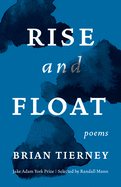
| Publisher: | Milkweed Editions | |
| Genre: | American, Death, Grief, Loss, General, Family, Poetry, Subjects & Themes | |
| ISBN: | 9781571315199 | |
| Pub Date: | February 2022 | |
| Price: | $16 |
| Starred | Poetry |
by Brian Tierney
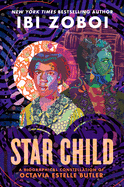
| Publisher: | Dutton Books for Young Readers | |
| Genre: | Biography & Autobiography, United States - African American & Black, People & Places, Social Topics, Literary, Cultural, Ethnic & Regional, Juvenile Nonfiction, Prejudice & Racism | |
| ISBN: | 9780399187384 | |
| Pub Date: | January 2022 | |
| Price: | $16.99 |
| Starred | Children's & Young Adult |
by Ibi Zoboi
Ibi Zoboi (The People Remember; American Street) pays radiant homage in Star Child to the woman who inspired her, taught her and shared her birthday. She deftly combines poetry, prose, quotes and photos to create what she calls the "constellation" of science fiction writer Octavia Estelle Butler: "I decided to call this biography a constellation because Octavia's mind and her imagination were truly complex wonders--bright and far-reaching." Through this visionary approach, Zoboi ensures that Butler's light will reach young readers.
Butler's life spanned the Space Race, the Cold War and the Civil Rights Movement. Zoboi weaves these events, using astronomy-laden imagery, into Butler's experience as the only daughter of a widowed domestic worker. She was a shy, dyslexic child who loved stories but struggled learning to read, the letters appearing "messy on the page/ Like rotating planets without axes/ Sideways like Uranus." Zoboi's appreciation for Butler's willingness to be different--to blaze her own path--shows on each page, through every poem and choice of quote. "At the time all the [pulp] authors were white men, but Octavia was so enthralled by science fiction, she imagined herself, a little black girl, as the hero in all the stories." This imagination enabled Butler to help other readers see themselves as the heroes, too.
Star Child immortalizes Butler as the innovative thinker and writer that she was. It illustrates each star that makes up the constellation of her life: her experiences, her creativity, her intelligence, the world she lived in. Readers shouldn't be surprised to find their own worlds feeling a little brighter from this exposure to her brilliance. --Jen Forbus, freelancer
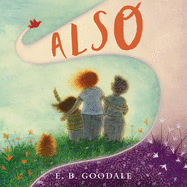
| Publisher: | Clarion Books | |
| Genre: | Emotions & Feelings, United States, Girls & Women, Imagination & Play, Biographical, Juvenile Fiction, Date & Time, Concepts, Mother's Day, Holidays & Celebrations, Family, Social Themes, Multigenerational | |
| ISBN: | 9780358153948 | |
| Pub Date: | February 2022 | |
| Price: | $17.99 |
| Children's & Young Adult |
by E.B. Goodale
E.B. Goodale's Also is a gentle meditation on time and memory that deftly describes a series of small but meaningful moments in the lives of three generations of a family.
A girl sits "high on the hill, amongst the blueberry bushes" near Gramma's house. "And also..." she's remembering the "rustling in the trees" she heard when camping in the woods with Mama. Her gramma looks out the kitchen window, simultaneously remembering being "surprised by a bunny in a bush" in her mother's garden. The girl's mama walks down the hill to find her, remembering that time when she sorted blueberries with her sister, tucked in a nook of her mama's kitchen. Finally, when "many years have passed," the narrator sits at her desk writing this story. "And also..." she is "a little girl at [her] gramma's house, high on the hill, amongst the blueberry bushes."
Goodale (Windows) fashions a contemplative text that ably conveys the dreamlike quality of remembrance. The language is lyrical, but there is a delightful playfulness in the tone as well. Her fine monoprint, gouache and blueberry ink illustrations make great use of color to differentiate clearly the present and the past, thought and memory. A bright red bird appears in each spread and provides a solid touchpoint throughout her circular and ever-shifting timeline. The whole of this picture book is a wonderful sum of its delicate parts but, most importantly, Also lovingly demonstrates for readers that "we are all here... and also there./ Always." --Lynn Becker, reviewer, blogger, and children's book author